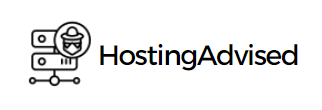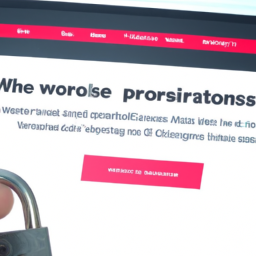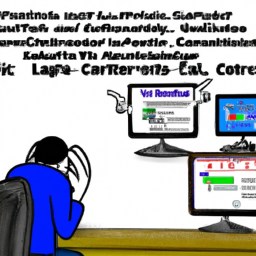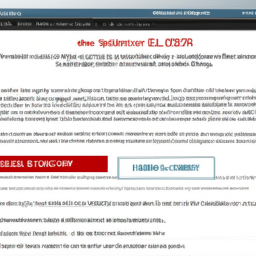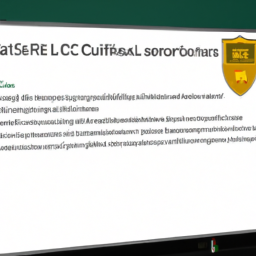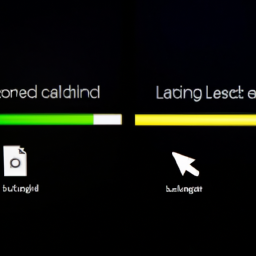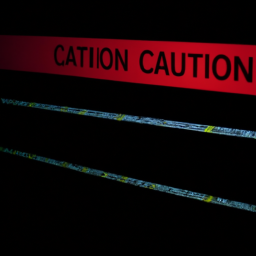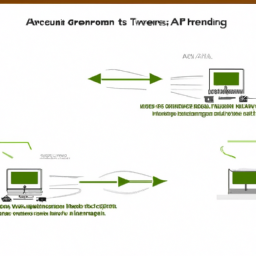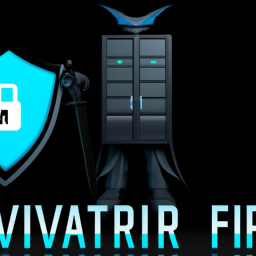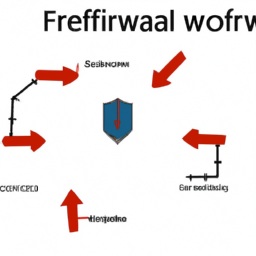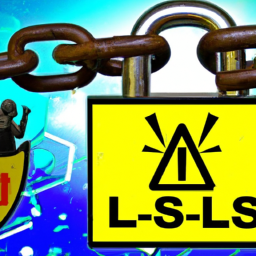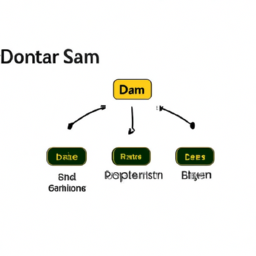Understanding the Impact of Server Downtime on Your Website’s Performance
When it comes to the success of your website, server downtime is a critical factor that cannot be ignored. Server downtime, defined as the period when your website is inaccessible to users due to server issues, can have a significant impact on your website’s performance.
Server downtime can be caused by various factors, including hardware failures, software glitches, network issues, or even cyber attacks. Regardless of the cause, the consequences of server downtime on user experience are severe. It can lead to frustrated users, lost sales opportunities, and damage to your brand reputation.
Moreover, server downtime also has financial implications. Each minute of downtime can result in significant loss of revenue, especially for e-commerce websites. Therefore, it is crucial to take steps to minimize server downtime, such as investing in robust infrastructure, implementing redundancy measures, and regularly monitoring and responding to any downtime incidents.
By understanding the impact of server downtime and taking proactive measures to prevent it, you can ensure optimal website performance, enhance user experience, and safeguard your financial stability.
Key Takeaways
- Server downtime can have significant consequences, including frustrated users, lost sales opportunities, and damage to brand reputation.
- Regular maintenance, monitoring system performance, and conducting security audits are best practices to prevent server downtime.
- Server downtime leads to decreased user engagement, negative impacts on search engine rankings, and reduced repeat visits.
- Financial implications of server downtime include potential revenue loss, customer dissatisfaction, and additional costs for troubleshooting and fixing issues.
The Definition and Causes of Server Downtime
Server downtime can be defined as the disastrous disruption of your website’s performance caused by a plethora of pesky problems.
Common server downtime causes include hardware failures, software glitches, network issues, and cyber attacks. These factors can lead to a complete halt in your website’s functionality, resulting in frustrated users and potential loss of business.
To prevent server downtime, it’s crucial to implement best practices such as regular server maintenance, monitoring system performance, and conducting security audits. By addressing these issues proactively, you can minimize the risk of downtime and ensure smooth website operation.
Understanding the impact of server downtime on user experience is essential as it directly affects the satisfaction and trust of your visitors.
The Consequences of Server Downtime on User Experience
When your website experiences server downtime, it can have a significant impact on user experience. Firstly, it leads to decreased user engagement and conversion rates as visitors are unable to access your site or complete desired actions.
Additionally, server downtime can negatively impact your search engine rankings, as search engines prioritize websites that are consistently available and reliable.
Decreased User Engagement and Conversion Rates
Imagine how frustrated your potential customers will be when they visit your website, only to encounter downtime that leads to decreased user engagement and conversion rates. This can have a significant impact on customer loyalty and brand reputation.
Here are four reasons why:
-
Loss of trust: When users experience downtime, they may question the reliability of your website and lose trust in your brand, leading to a decline in customer loyalty.
-
Abandoned transactions: Downtime can disrupt the user’s journey, causing them to abandon their intended transactions, resulting in lost sales and decreased conversion rates.
-
Negative word-of-mouth: Dissatisfied users are likely to share their negative experiences with others, tarnishing your brand reputation and deterring potential customers.
-
Reduced repeat visits: If users consistently encounter downtime on your website, they’re less likely to return, resulting in decreased user engagement and repeat visits.
Understanding the impact of server downtime on user engagement and conversion rates is crucial for maintaining a successful online presence.
Transitioning into the next section, it’s important to note that server downtime can also have a negative impact on search engine rankings.
Negative Impact on Search Engine Rankings
Experiencing downtime can result in a significant drop in search engine rankings, affecting your website’s visibility and ultimately hindering its success online.
When your website is inaccessible to users due to server downtime, search engines are unable to crawl and index your pages, leading to a negative impact on website traffic. This decrease in visibility can have far-reaching implications on your SEO strategy, as it diminishes the opportunity for your website to appear in search engine results.
When your website consistently experiences downtime, search engines may interpret it as a sign of poor user experience, which can further affect your rankings. Therefore, it’s crucial to prioritize server uptime and invest in reliable hosting solutions to maintain a strong online presence.
Ensuring your website remains accessible and functional will not only improve search engine rankings but also positively contribute to the financial implications of your online endeavors.
The Financial Implications of Server Downtime
You can’t afford to ignore the financial implications of server downtime. When your website is inaccessible due to server issues, it directly translates into financial losses.
Every minute of downtime means potential revenue lost, as customers are unable to make purchases or access your services. Moreover, it leads to customer dissatisfaction, as they expect seamless and uninterrupted online experiences. This dissatisfaction can result in customers switching to your competitors and tarnishing your brand reputation.
Additionally, server downtime also incurs costs in terms of troubleshooting and fixing the underlying issues. To minimize these financial implications, it’s crucial to take proactive steps to ensure server uptime.
By implementing robust monitoring systems, conducting regular maintenance, and having a disaster recovery plan in place, you can mitigate the risk of server downtime and safeguard your business’s financial well-being.
Steps to Minimize Server Downtime
To minimize the risk of server downtime and keep your business running smoothly, it’s crucial to take proactive steps. These steps include implementing robust monitoring systems, conducting regular maintenance, and having a disaster recovery plan in place. After all, an ounce of prevention is worth a pound of cure.
Here are three key measures you can implement to improve server reliability and minimize downtime:
-
Regularly monitor server performance: By utilizing monitoring tools, you can track the health and performance of your servers in real-time. This allows you to identify potential issues before they escalate into full-blown downtime.
-
Conduct routine maintenance: Regularly updating software, applying security patches, and performing hardware checks can help prevent unexpected failures and keep your servers operating at optimal levels.
-
Implement a disaster recovery plan: Having a comprehensive plan in place ensures that your business can quickly recover from any server downtime. This includes regular backups, replication of critical data, and procedures for restoring services.
By implementing these measures, you can minimize server downtime and improve the reliability of your website.
Moving on to monitoring and responding to server downtime…
Monitoring and Responding to Server Downtime
To effectively monitor and respond to server downtime, you need to set up automated monitoring systems that constantly check the health and performance of your servers. These systems should be able to detect any issues or abnormalities and alert you immediately.
Additionally, it’s crucial to develop a downtime response plan that outlines the steps to be taken when server downtime occurs. This plan should include who should be notified, how the issue will be investigated and resolved, and how communication with users will be managed.
Setting Up Automated Monitoring Systems
Setting up automated monitoring systems can help ensure uninterrupted website performance and minimize the impact of server downtime. By implementing these systems, you can receive automated alerts whenever there’s a server issue, allowing you to respond quickly and effectively.
These alerts can be customized to notify you of specific events, such as high CPU usage or network connectivity problems. By monitoring key performance indicators like response time and uptime, you can identify potential issues before they escalate and impact your website’s performance.
Additionally, automated monitoring systems can provide valuable insights into server performance trends, helping you optimize resources and plan for future capacity needs. With effective monitoring strategies in place, you can proactively address server downtime and develop a downtime response plan to minimize its impact on your website’s functionality and user experience.
Developing a Downtime Response Plan
When developing a downtime response plan, you should consider the potential consequences of server issues on your website’s reliability and user satisfaction.
Downtime communication is crucial during server outages to keep your users informed and minimize frustration. Implementing an effective incident response process ensures quick identification and resolution of server issues, reducing the impact on your website’s performance.
To evoke emotion in the audience, consider the following:
-
Loss of revenue: Downtime can result in missed sales opportunities and customer dissatisfaction, leading to financial losses.
-
Damage to reputation: Extended periods of server downtime can harm your brand’s reputation, causing customers to lose trust in your website’s reliability.
-
Decreased user engagement: Users expect seamless browsing experiences, and frequent server issues can drive them away, impacting user satisfaction and engagement.
Understanding the importance of regularly assessing and improving server performance is vital to prevent future downtime incidents and maintain a reliable website.
The Importance of Regularly Assessing and Improving Server Performance
Improving server performance is absolutely crucial for ensuring your website doesn’t completely collapse under the weight of its own inefficiencies. Regular server maintenance and the importance of server backups play a vital role in achieving this goal. By regularly assessing and improving server performance, you can identify and resolve any bottlenecks or vulnerabilities that may impact your website’s availability and speed. This proactive approach allows you to address issues before they escalate into major problems, minimizing the risk of server downtime. Additionally, regularly backing up your server ensures that you have a recent copy of your website’s data and configurations, reducing the impact of potential data loss in case of a server failure. To further emphasize the significance of regularly assessing and improving server performance, consider the following table:
| Benefits of Regular Server Assessment and Improvement |
|---|
| 1. Enhanced website performance and user experience |
| 2. Improved server stability and reliability |
| 3. Minimized risk of downtime and data loss |
| 4. Increased security against potential threats |
Regularly assessing and improving server performance is essential for maintaining a high-performing website, minimizing downtime, and safeguarding your data.
Frequently Asked Questions
What are the common signs of server downtime that website owners should look out for?
When it comes to website monitoring and server maintenance, website owners should be vigilant for common signs of server downtime.
These signs include slow page loading, error messages, unresponsive features, and complete website outages.
These issues can negatively impact user experience, decrease customer satisfaction, and even lead to loss of potential revenue.
It’s crucial for website owners to promptly address server downtime to ensure optimal website performance and minimize any disruptions for their users.
How does server downtime impact search engine rankings and website visibility?
Server downtime has a significant impact on search engine rankings and website visibility. When your website is inaccessible, search engine crawlers cannot index its content, resulting in lower rankings. This leads to a decrease in organic traffic and potential customers.
To minimize this impact, implement strategies like monitoring server uptime, utilizing a content delivery network, and optimizing website speed. Regularly backing up your website and having a disaster recovery plan in place can also help mitigate the effects of server downtime.
Are there any legal implications or data security risks associated with server downtime?
Experiencing server downtime is like having a locked vault with no access to your valuable data. Legal consequences can arise if server downtime leads to breaches of data protection regulations. In such cases, organizations may face hefty fines and damage to their reputation.
Additionally, data breach risks increase during server downtime as cybercriminals may exploit vulnerabilities. It’s crucial to prioritize server uptime to mitigate these legal implications and safeguard sensitive information.
Can server downtime affect website credibility and customer trust?
Server downtime can significantly impact your website reputation and customer trust. When your website is unavailable, it gives the impression that your business is unreliable and unprofessional. Customers may lose confidence in your ability to meet their needs, leading to a decline in customer retention.
With countless alternatives available, users are quick to abandon a site that fails to deliver a seamless experience. Ensuring minimal downtime is crucial for maintaining a positive online reputation and retaining valuable customers.
How can website owners effectively communicate with their users during server downtime to minimize frustration and maintain a positive user experience?
To effectively communicate with users during server downtime and minimize frustration, website owners can employ several strategies.
Firstly, they should utilize clear and concise messaging, providing regular updates on the situation and estimated downtime.
Secondly, offering alternative channels for users to access information or complete transactions can mitigate frustration.
Additionally, using automated notifications and personalized emails can reassure users and maintain a positive user experience.
By implementing these communication strategies, website owners can effectively navigate server downtime and ensure user satisfaction.
Conclusion
In conclusion, understanding the impact of server downtime on your website’s performance is crucial to ensure a seamless user experience and avoid financial losses.
By minimizing server downtime through proactive measures and regularly assessing and improving server performance, you can enhance the reliability and availability of your website.
Investigating the truth of this theory will enable you to engage your audience and make informed decisions to optimize your website’s performance.
Remember, every second counts in the digital world, so prioritize reducing server downtime for a successful online presence.
